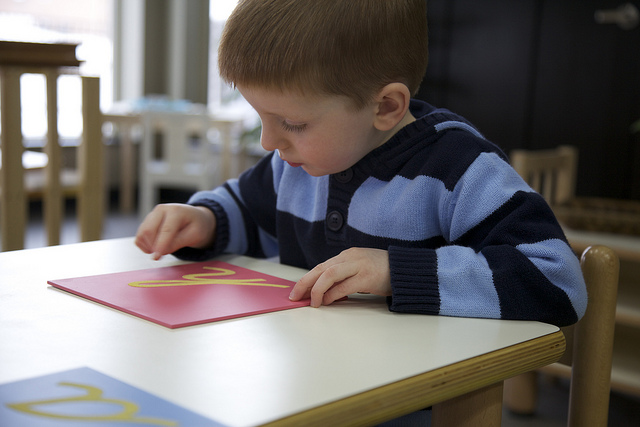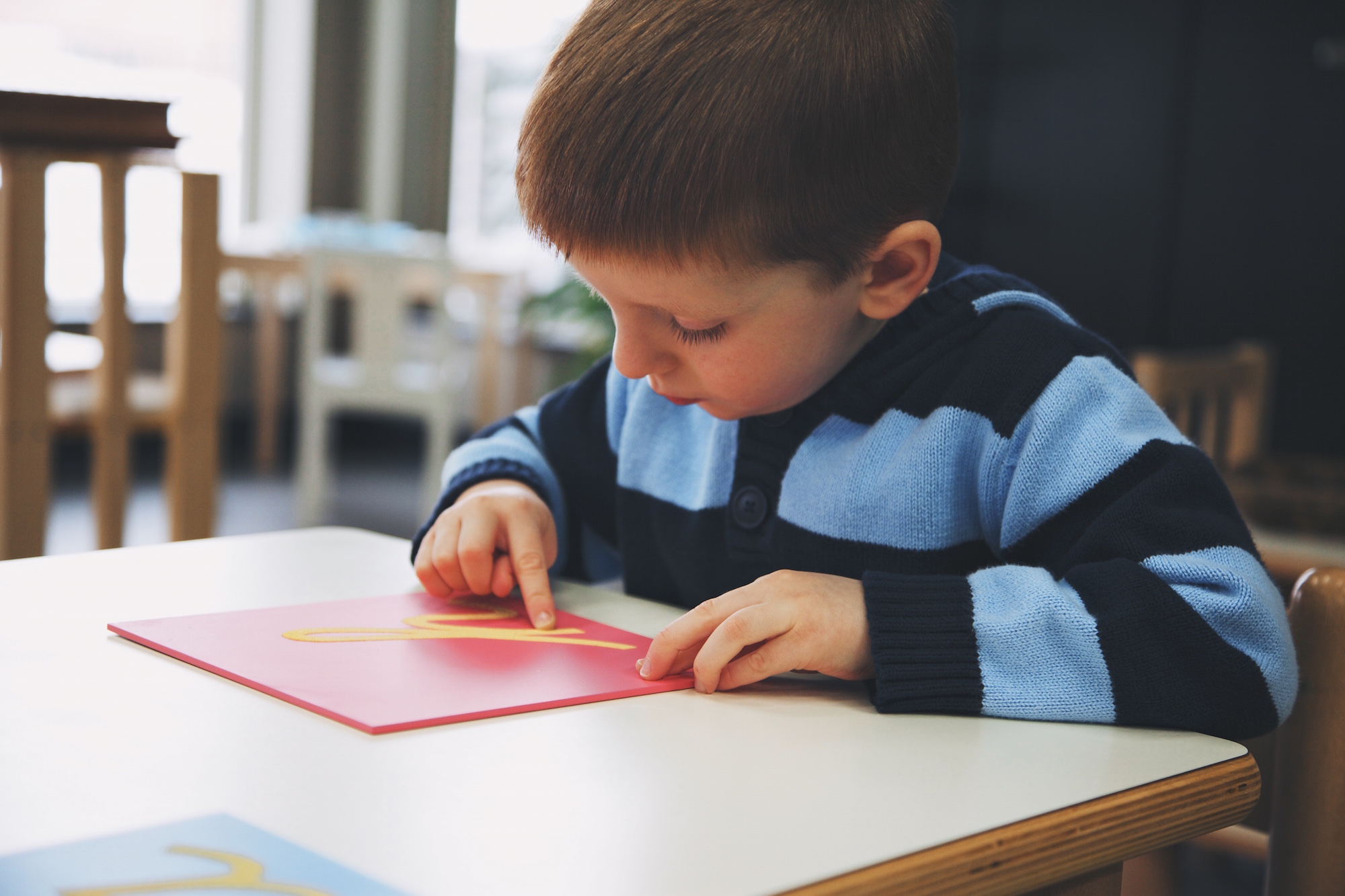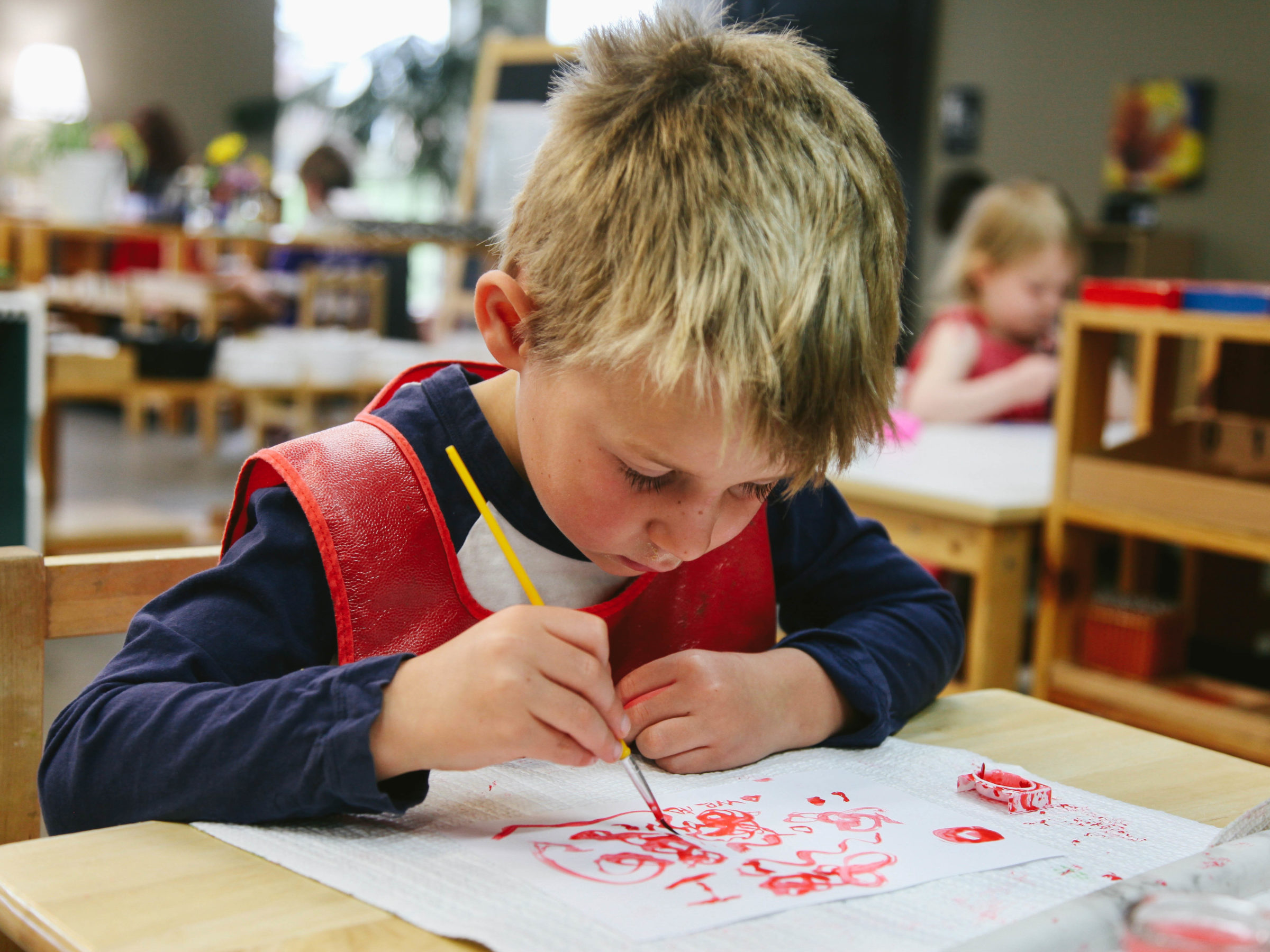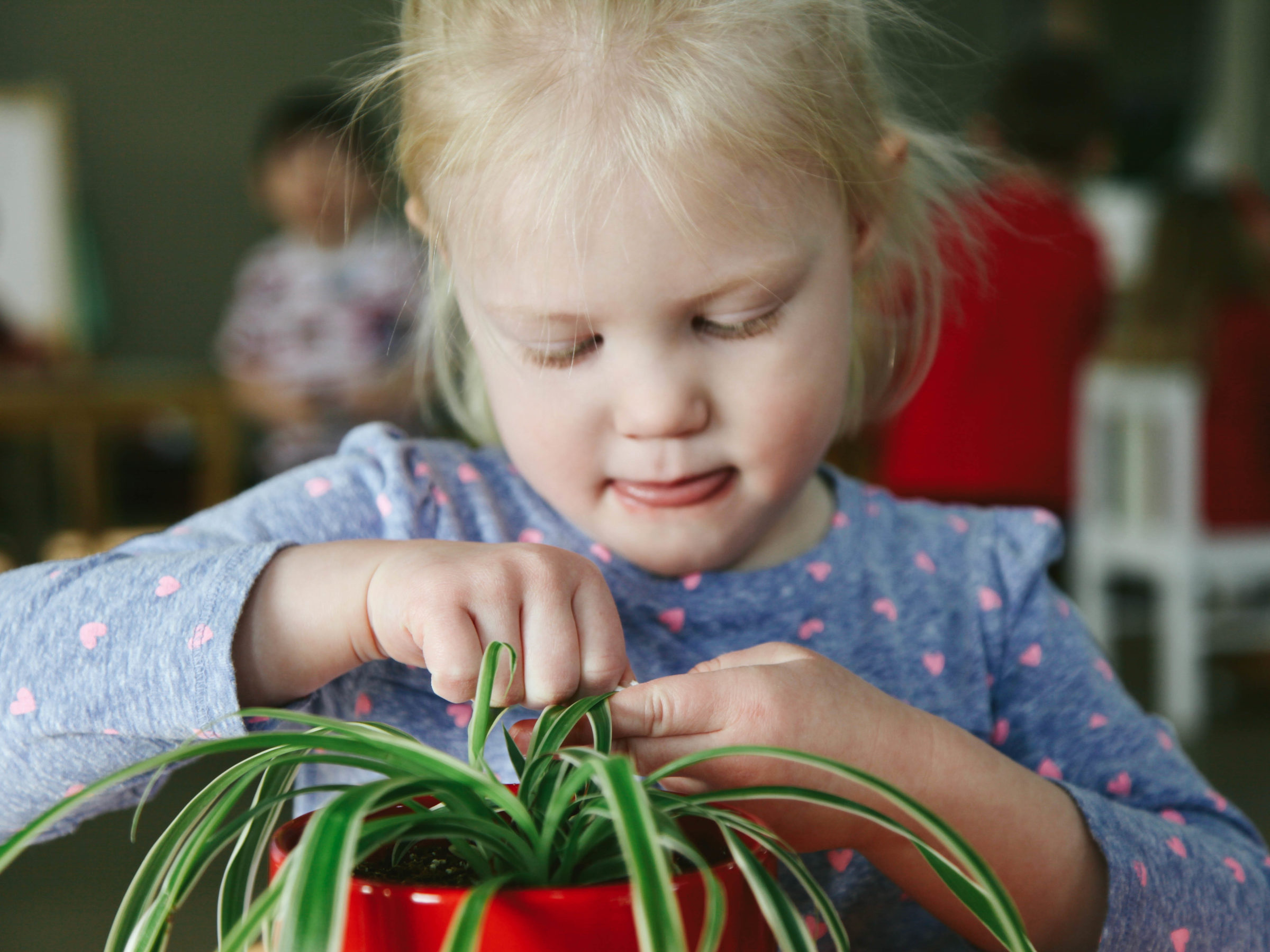Cursive in Montessori
Montessori Activities
Did you know that Montessori schools start with cursive, as opposed to print? We thought we would take this opportunity to point out a few of the benefits, and to explain the rationale in greater detail.

There are at least two main reasons to start with cursive:
-
Letter Recognition: As many of you know, learning about b’s, d’s, p’s, and sometimes q’s, can be very confusing for students. Recognizing the differences between these printed letters is a common challenge. With cursive, these issues are nearly completely alleviated and the children have a leg up on writing and reading.
-
Movements: Writing in cursive is a natural movement for children. It’s smooth and unencumbered. It doesn’t require the vertical lines and perfect circles that are employed in print. It’s based on circular motions and “scribbles”. In many respects, cursive is a natural extension of the free flowing movements of the hand.
Typically, it’s much easier for children to transition from cursive to print, then it is to transition from print to cursive.
Our friends at www.montessori.org have some nice thoughts about cursive: “When writing in cursive the act of connecting the letters that form a word help the child’s mind to see those letters as a word. The letters of each separate word are connected and then there is a space distinguishing it from the word that follows. This will make it easier for someone else reading the child’s writing to be able to distinguish each separate word.”
They go on to articulate that, “the most compelling reason for using the cursive script is that the children who learn to read cursive words first make a very quick transition to reading print. In fact, they very often have an innate curiosity about all forms of lettering and an enjoyment in puzzling out unusual alphabetical signs.”
Here’s Maria Montessori:
“Must one begin with strokes? The logical answer is “No.” These require too much effort on the part of the child to make them. If he is to begin with the stroke, it should be the easiest thing to execute. But, if we note carefully, a straight stroke is the most difficult to make. Only an accomplished writer can fill out a page with regular strokes, whereas a person who is only moderately proficient can cover a page with presentable writing.” – (Dr. Maria Montessori, ‘The Discovery of the Child’, Clio Press Ltd, 193)
FAQ:
Q: If my child transitions to public school, will they be behind their peers?
A: Of course, each child is completely different and learns at their own pace, but introducing cursive first, as opposed to print, will not delay their learning. If anything, it will help strengthen the student’s understanding of the language.
Q: In traditional school, children are usually taught cursive in third, or even fourth grade. Why do you start so early in Montessori?
A: Montessori believed that cursive was the best introduction to writing and reading because it was the most natural. There are at least two primary reasons. The a) continuous movement of the hand, or body-wide learning, is organic and would develop b) a greater appreciation and understanding of the letters, maximizing writing and reading abilities, while limiting confusion.
Q: Is there any value in teaching cursive? I mean, we only use cursive to write checks anymore, and even that is going away. Isn’t cursive a relic of the past?
A: We live in a world of print. We’re surrounded by it. It’s everywhere. Everyone will learn print. By teaching cursive first, however, children are offered a smoother introduction to the world of language.
Any more questions? We would love to hear from you and see what you think about cursive in Montessori. Send us a note!
You might also enjoy our post in The Atlantic, Don’t Write Off Cursive, which you can read here.
Written by:
Baan Dek



